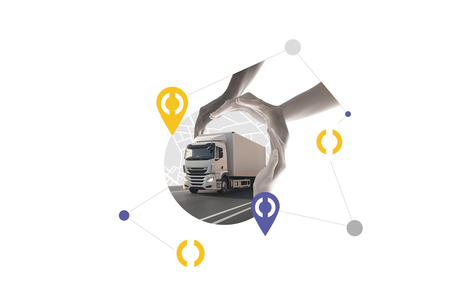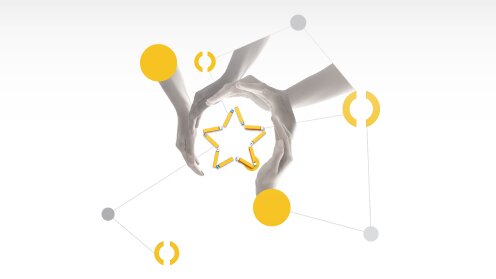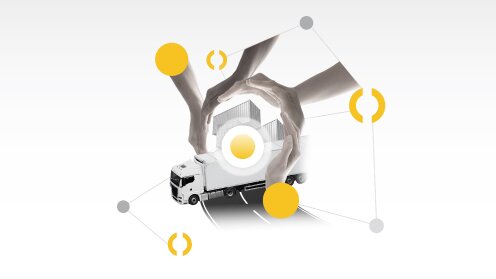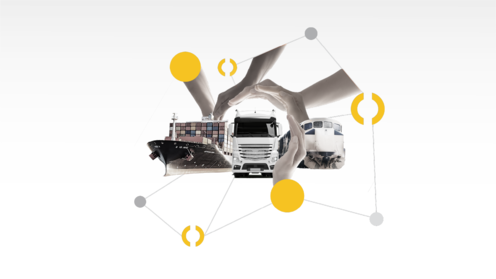Episode 6 in our Carrier Community series of discussions assesses the benefits of Real-time Visibility – including better planning, more profit and ‘total care of transport’.
Empty miles down by 10%. Carbon emissions down by 7%. Check calls down by 80%. Best in class ETA accuracy of 88%. The numbers sound impressive – even more so when you realise that they are real.
Since the dawn of logistics, back in the days of the horse and cart, the people responsible for moving goods from A to B have dreamed about certainty. Where are my goods right now, when will they arrive and, most of all, is anything likely to delay them? In logistics, certainty is a solid-gold asset, because it means more efficiency and less waste. And 100% efficiency, with 0% waste, is now, and always has been, the distant holy grail of carrier and LSP professionals looking to boost margins and save on costs in the successful pursuit of perfect systems and processes. That search will always continue.
When a carrier or LSP enjoys certainty, they can promise the client with confidence when the shipment is arriving. The receiver can plan a dock and yard team and schedule with certainty and without congestion while the LSP can plan other journeys, other trucks and other drivers accordingly. Imagine having the certainty of knowing exactly where every truck is on the road, at every moment. Operations can be executed without fuss, leaving your team to focus on the exceptions that are prone to occur in every logistics scenario. Customer service levels become stratospheric.
Real-time Visibility (RTV) is the missing piece that completes the jigsaw. By providing both an all-round overview of operations and an individual picture of every truck and journey in your fleet, it provides the certainties the industry has craved for so long.
Rob Hermans joined us for episode 6 of Carrier Community Talks to offer insight for other carriers and LSPs into his experiences with RTV. Rob is Operations Director for GEBA Trans, a Europe-wide LSP based out of Venlo, Netherlands. He has a staff of around 30 booking and managing the A-Z transport journey for a raft of international clients. GEBA Trans started using Tranporeon’s range of digital solutions when customers started asking the company to use the platform to book load and unload slots at client premises.
5 ways that RTV improves carrier transport planning and execution:
1. The clients want it
“We started using Transporeon visibility technology because our clients wished us to,” reports Rob. “When we talk to them about the challenges they face, we are able to give specific answers to each client. All want more insight and visibility on their shipments, whether on arrivals, departures or delays, so it was a very easy decision to select Transporeon’s Visibility Hub.”
2. It improves client relationships
Ease of proactive communication between supply chain partners is enabled by RTV, because planners can check the status of transports via simple links in the company’s own TMS, sending immediate reports and alerts to clients as required. The trust that results from accurate communication of up-to-date information makes a strong contribution to open and honest partnerships.
Valuable information to be shared includes real-time Estimated Time of Arrival (ETA) and route optimisation updates. This prevents drivers waiting onsite for valuable hours, cuts yard congestion and most importantly, enables the carrier and the customer to work together to reduce costs, such as detention and demurrage penalty fees.
3. No implementation fears
Transporeon’s Visibility Hub connects and adds on to existing TMS packages, so does not impact on day-to-day operations during implementation periods. Crucially, it does not require the disruption and capital expenditure of a brand-new IT infrastructure. Rob Hermans says that his planners can comfortably insert all relevant data, such as truck number and company name, alongside all other data appropriate to each specific client.
4. Better comms with subcontractor carriers
Selection of subcontractor carriers is optimised with an RTV capability. If the client requires a visibility capability, does your selected haulier have the necessary connectivity? Collaboration and transparency are the watchwords because they enable team planners to work on their own initiative. “Our planners can make their own choices, and follow up and be proactive with clients,” says Rob. “By checking which hauliers have access to the Visibility Hub, we are optimising control. Gradually, we want to have all hauliers on the system, because visibility makes things better for everyone.”
5. Stress-free transport executions
Transport executions are smoother and more trouble-free with RTV. Rob Hermans shares a simple, but typical story illustrating this: “We had a client waiting for a truck in France. It was cold, wet and dark, getting late and our truck was standing at a roundabout, just 1km from the loading dock. Instead of the confusion and delay that might have happened in the past, we were able to lead our driver to the designated place without fuss and without complex telephone calls. It’s a simple example but it shows how client communication also makes life easier for hard-pressed drivers.”
“RTV enables us as an LSP to focus on the two most important things: service and quality,” reflects Rob Hermans. “It enables us to take total care of transport in the most optimal and appropriate way.”
In case you missed watching our last episode of Carrier Community Talks Episode 5 on Elevate to top tier in Carrier Loyalty Program, Watch now






